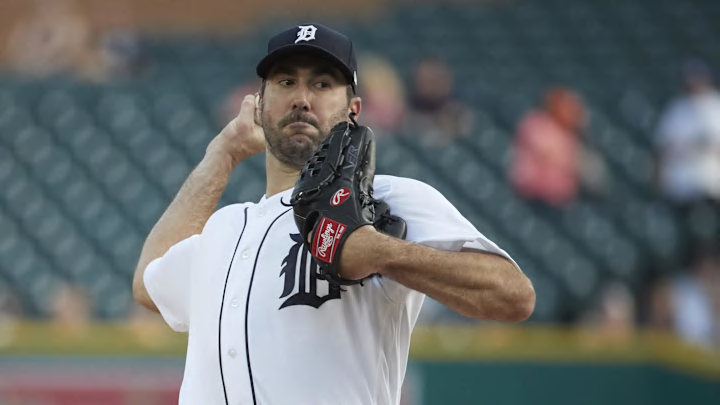This is a great era if you like pitching. This is a horrible era if you like pitching. Velocities are up. Spin rates are up. Pitchers are dominating.
Pitches are getting injured. It seems like there's another pitcher scheduled for Tommy John surgery every day.
The Tigers have already felt the sting themselves, with former top prospects like Alex Faedo, Casey Mize, and Joey Wentz having undergone Tommy John in the past few years. Last June, MLive noted in just one story four more Tigers minor leaguers who underwent the procedure.
Justin Verlander spoke at length about causes and fixes for increase in pitcher injuries
Former Detroit Tigers ace Justin Verlander spoke out to Houston television station KPRC's Ari Alexander about what has caused the rise of injuries to pitchers.
Justin Verlander on the rash of pithcer injuries:
— Ari Alexander (@AriA1exander) April 7, 2024
"...I think the game has changed a lot, it would be easiest to blame the pitch clock, in reality everything has a little bit of influence, the biggest thing is the style of pitching has changed so much, everyone is throwing as… pic.twitter.com/rzmvwhB27R
"It would be easiest to blame the pitch clock. ... In reality, everything has a little bit of influence. The biggest thing is the style of pitching has changed so much, everybody is throwing as hard as they possibly can and spinning the ball as hard as they possibly can," Verlander said. "It's hard to deny those results.
He's no stranger to injuries himself, having undergone Tommy John in 2021 at age 37.
Verlander said it's a double-edged sword when a pitcher can throw 100 mph. If he dials it back a bit but gives up a home run, people are left thinking he isn't giving it his all. But something needs to change, he said.
When the balls started to change back in 2016 and started flying out a bit more frequently, ... it changed how I had to approach pitching. I want(ed) swing and miss. I can't have him put the ball in play."
Verlander said the old adages about pitching to contact, pitching down-and-away, get weak contact early in the count went out the window when everybody started going out of the yard.
"I don't how we rewind the clock," he continued. "Maybe there's some way to incentivize starting pitching going deeper in games. I started talking to (Max) Scherzer last year ... and we talked about having the starting pitching being tied to a DH and you have to achieve certain milestones. If a pitcher comes out and he hasn't achieved certain milestones, you lose your DH."
Would that solution work? Or is the game so unbalanced now that pitchers would just give up more runs and be forced to tax their arms by going deeper into games?
Like Verlander said, there doesn't seem to be an easy solution to the arms race on both sides of the equation in baseball. But for the longerm good of the game and those who play it, it's important not to let that get in the way of searching for answers.
